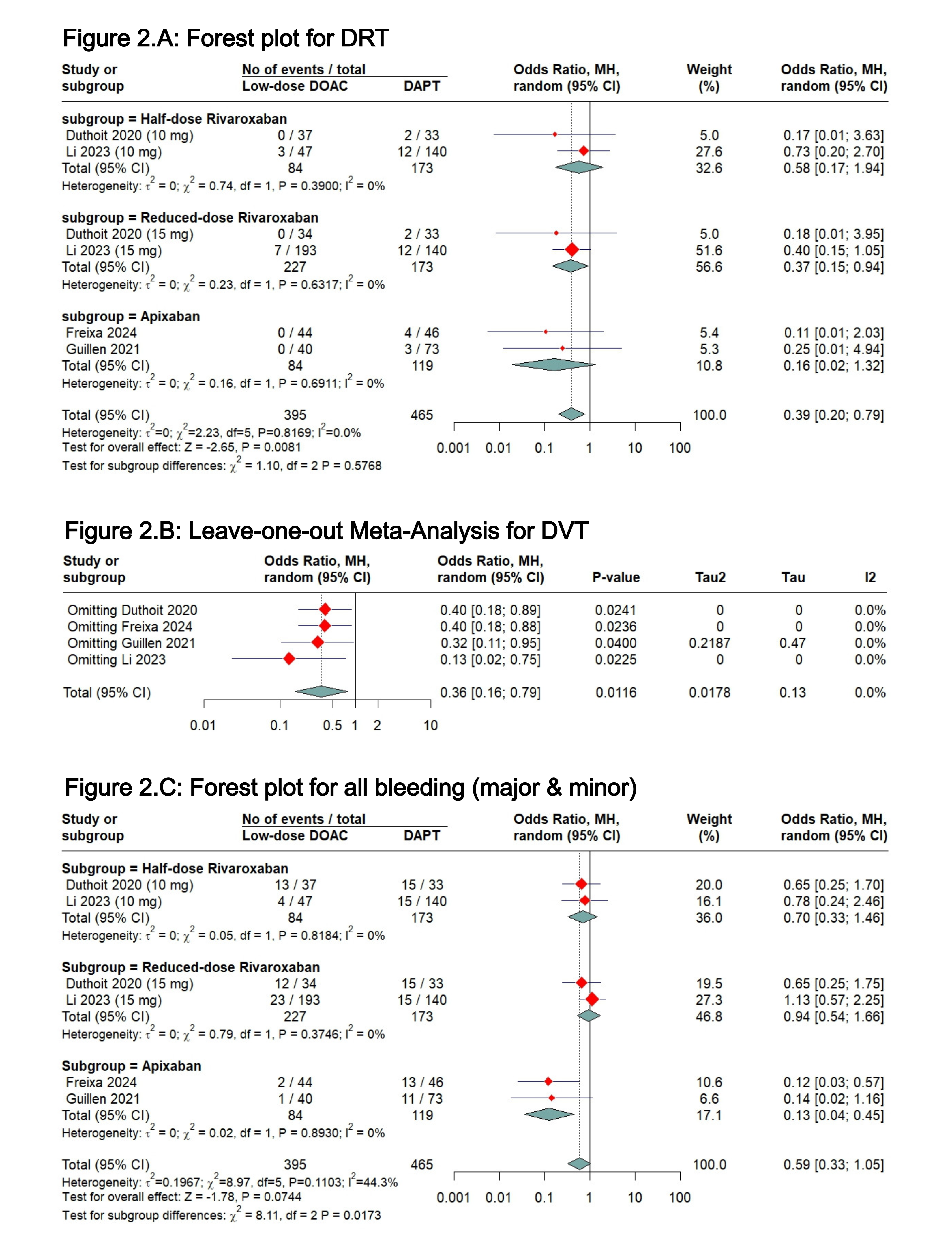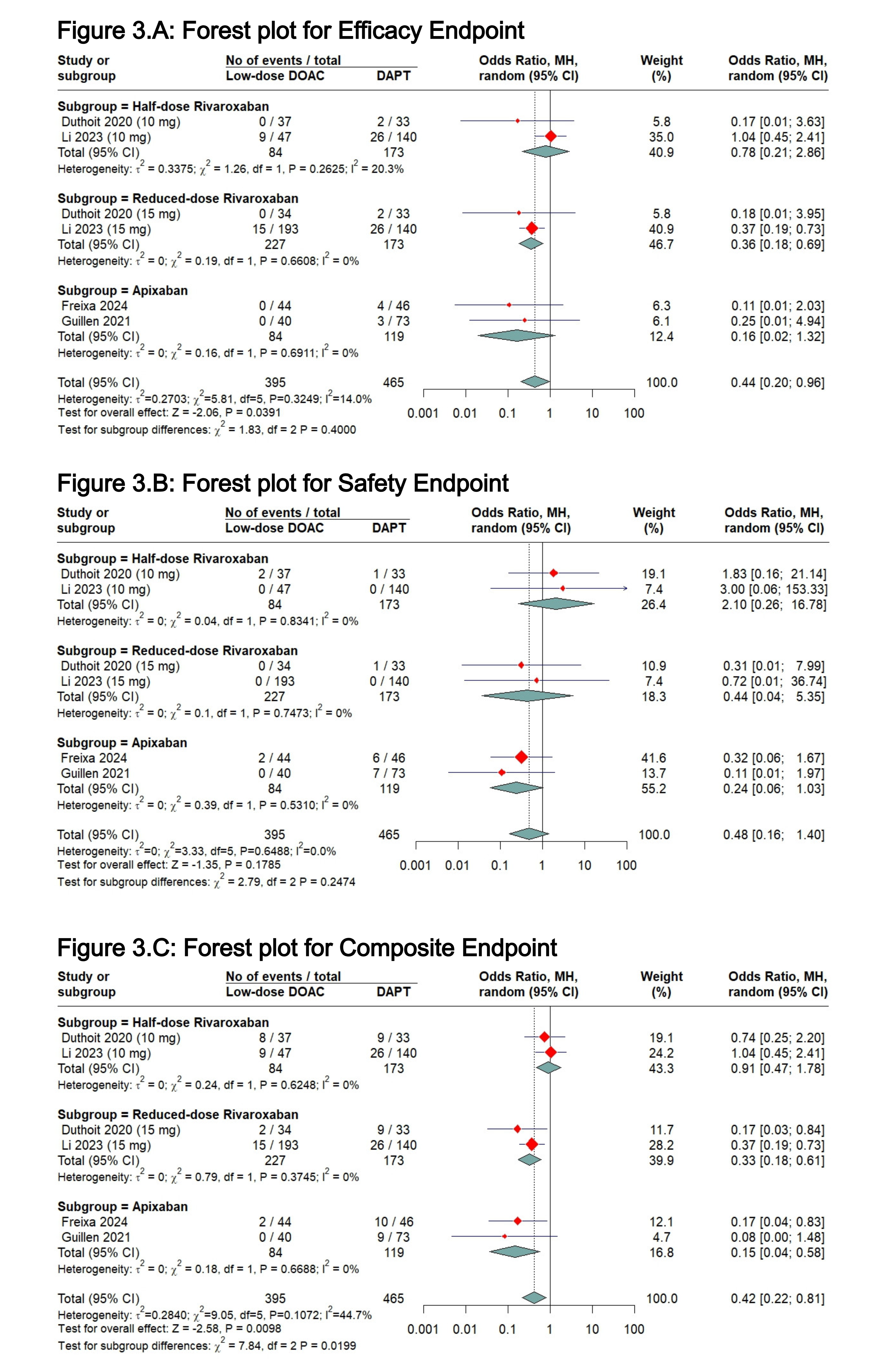Lots of interesting abstracts and cases were submitted for TCTAP 2025. Below are the accepted ones after a thorough review by our official reviewers. Don’t miss the opportunity to expand your knowledge and interact with authors as well as virtual participants by sharing your opinion in the comment section!
TCTAP A-088
Comparative Efficacy and Safety of Low-Dose Direct Oral Anticoagulants Versus Dual Antiplatelet Therapy Following Left Atrial Appendage Occlusion in Patients With Atrial Fibrillation: A Systematic Review and Meta-Analysis
By Ahmed Ibrahim, Laila Shalabi, Sofian Zreigh, Sohaila Mourad, Shrouk Ramadan, Ghaith Y. Eljadid
Presenter
Ahmed Ibrahim
Authors
Ahmed Ibrahim1, Laila Shalabi2, Sofian Zreigh3, Sohaila Mourad1, Shrouk Ramadan4, Ghaith Y. Eljadid4
Affiliation
Alexandria University, Egypt1, Gharyan University, Libya2, Ankara Yildirim Beyazit University, Turkey3, Ain Shams University, Egypt4
View Study Report
TCTAP A-088
Pharmacotherapy (Heart Failure)
Comparative Efficacy and Safety of Low-Dose Direct Oral Anticoagulants Versus Dual Antiplatelet Therapy Following Left Atrial Appendage Occlusion in Patients With Atrial Fibrillation: A Systematic Review and Meta-Analysis
Ahmed Ibrahim1, Laila Shalabi2, Sofian Zreigh3, Sohaila Mourad1, Shrouk Ramadan4, Ghaith Y. Eljadid4
Alexandria University, Egypt1, Gharyan University, Libya2, Ankara Yildirim Beyazit University, Turkey3, Ain Shams University, Egypt4
Background
Atrial fibrillation (AF) is a common cardiac arrhythmia associated with a high risk of stroke and thromboembolic events. Percutaneous left atrial appendage occlusion (LAAO) has emerged as an alternative to oral anticoagulation therapy, yet the optimal antithrombotic strategy post-procedure remains unclear.Aim: To compare the safety and efficacy of low-dose direct oral anticoagulants (DOACs) versus dual antiplatelet therapy (DAPT) following LAAO.
Methods
A comprehensive literature search was conducted in October 2024 across PubMed, Scopus, Cochrane, and Web of Science databases. Inclusion criteria encompassed adults aged 18 and older with AF who underwent successful LAAO. Primary outcomes included device-related thrombosis (DRT), major bleeding, and thromboembolic outcomes (strokes and systemic embolism (SE)). Statistical analysis was conducted using R version 4.3.2.
Results
Four studies involving 727 patients were included, comprising two randomized controlled trials and two cohort studies Low-dose DOAC therapy significantly reduced the risk of DRT by 64% compared to DAPT (OR = 0.36; 95% CI [0.16, 0.79], p = 0.011), and also demonstrated superior efficacy (OR = 0.36; 95% CI [0.16, 0.85], p = 0.01). However, there wasn't a significant difference in the incidence of major bleeding (OR = 0.36; 95% CI [0.11, 1.18], p = 0.091; I² = 0%). The composite endpoint of efficacy and safety outcomes was significantly reduced in the low-dose DOAC group (OR = 0.41; 95% CI [0.25, 0.67], p = 0.0003; I² = 0%).




Conclusion
Our findings suggest low-dose DOACs are safer and more effective antithrombotic option than DAPT in patients with AF following LAAO. Our findings has shown better clinical outcomes and lower rates of complications. Further research is warranted to establish long-term safety and efficacy in large control clinical trialsKeywordsAtrial fibrillation, Left atrial appendage occlusion, Low-dose direct oral anticoagulant, Dual antiplatelet therapy, Device-related thrombosis


